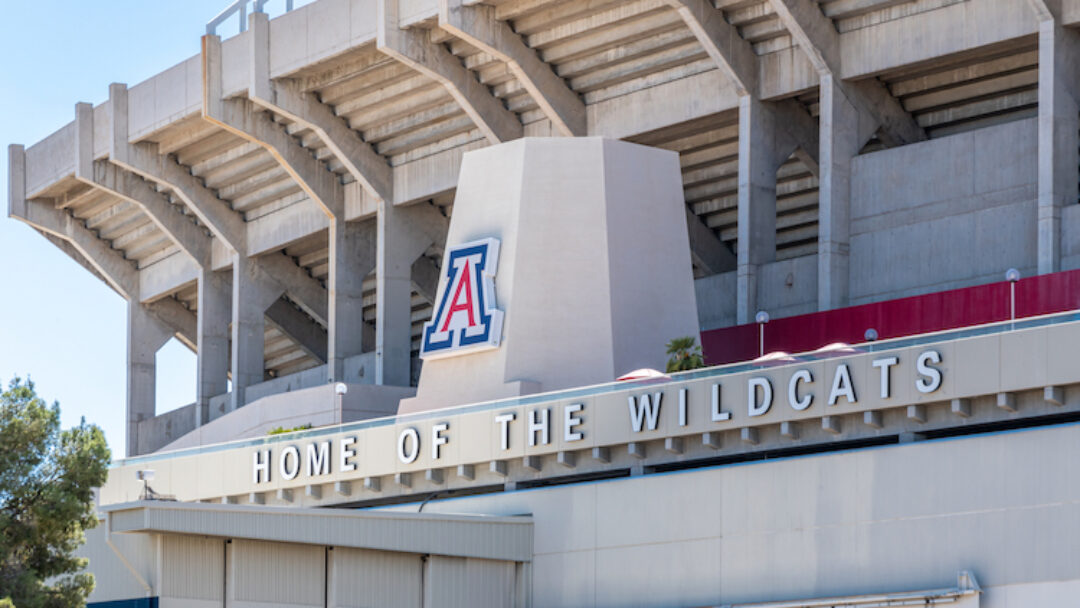The University of Arizona is facing a difficult challenge as they figure out their financial crisis that could ultimately lead to cutting some UA Athletic sports programs at the school.
Robert Robbins, President of the University of Arizona, has announced he is contemplating potential layoffs, eliminating several sports teams and other cost-cutting due to an unexpected $240 million miscalculation, which has led to a fiscal emergency throughout the campus.
Robbins has identified that the athletics department at the university is facing a shortfall and is not able to sustain itself financially without assistance in order to balance the UA’s overall operating budget.
Robbins informed the university faculty last week that no option is off the table when it comes to dealing with athletics. It is a matter that necessitates making a lot of difficult choices.
Many of who have weighed in on the difficult decisions the university will have to make agree that it is exceptionally hard for athletic directors and college presidents to have to cut sports. Universities have a lot of the passionate alumni that are former student athletes that do not want to see their sport cut from their school.
The University of Arizona is not the only one supporting an athletic department that is facing financial difficulty. Universities across the country are based on the proceeds from media-rights. The funding differ significantly between conferences and universities.
The UA made the choice to transition from the Pac-12 to the Big 12 for the upcoming year in order to maintain their financial stability after their negotiations for media-rights with the Pac-12 failed.
UA’s athletics department has not been able to pay back the $55 million loan taken from the university’s operating budget during the pandemic, and this has contributed to the university’s current financial issues.
Currently UA has 23 sports programs at the university, even though other Big 12 schools typically have 17 teams. Knight-Newhouse College Athletics public records show that the University of Arizona’s athletic department had total expenditures of $124.94 million in 2022.
For facilities and equipment, a total of $35,174,017 was used. Coaches were paid $22,395,123, while support and administration severance costs reached $19,996,951. Game expenses and travel cost $14,101,997 and $13,829,484 was put towards athletic student aid.
Including uniforms and marketing, the organization spent $13,866,010 on other expenses. Additionally, $2,594,234 was used for recruitment costs, $1,144,200 for medical costs, and $1,842,910 for competition guarantees.
However, at last week’s Faculty Senate meeting, it was stated that the athletic department’s budget accounted for around $100 million, which was roughly $24 million beneath the Knight-Newhouse College Athletics Database’s evaluation. Reportedly, the Pac-12 contributes around $40 million, primarily from football and basketball ticket sales coming in at approximately $30 million, and the last $30 million is derived from philanthropy and contracts.
Robbins has yet to disclose which sports programs will be reduced or eliminated, with the finalized plan expected to be submitted to the Arizona Board of Regents by Dec. 15. It is likely that the cuts will be directed at male sports in order to be compliant with Title IX regulations. Football and basketball, which generate most of the ticket-sales revenue for the university, are not expected to be affected.
For student-athletes, being informed that their team has been discontinued can be a difficult experience emotionally. Student athletes invest a lot of effort and time into representing and competing for the university. To come to the realization that the university lacks the capability to uphold the program is very disheartening.
The University of Arizona may not be the only higher-education institution to ax athletics for economic reasons. In 2022, the University of Minnesota eliminated its men’s indoor and outdoor track and field, gymnastics, and tennis teams. A year prior, William & Mary cut their gymnastics, swimming, men’s track and field, and women’s volleyball teams. During the COVID-19 pandemic, the University of Iowa got rid of its men’s gymnastics, both men’s and women’s swimming teams, and men’s tennis teams.
If any programs are reduced at the UA, demonstrations and fundraising attempts would not be unexpected. On the other hand, establishing a permanent endowment to sustain a sports team over a long period of time is almost impossible.
The University of Arizona’s two highest paid employees are its coaches. Tommy Lloyd, the head coach of the men’s basketball team, earns an annual salary of $3.6 million, and Jedd Fisch, the head coach of the football team, makes $2.1 million. Adia Barnes, the head coach of the women’s basketball team, is among the UA’s five top earners, with a yearly salary of $1.1 million, despite the financial difficulties of the athletic department.
The University of Arizona’s football program’s staff directory reveals that the squad has fifty personnel members, and that does not include any assistants and support staff.
Without a doubt the market for college football and basketball coaches has become very important, with schools feeling the need to pay handsomely in order to secure a coach that can keep them competitive on a national scale.
Some feel that substantial salaries of sports coaches and some executive administrators should be first to step up and make a sacrifice.








